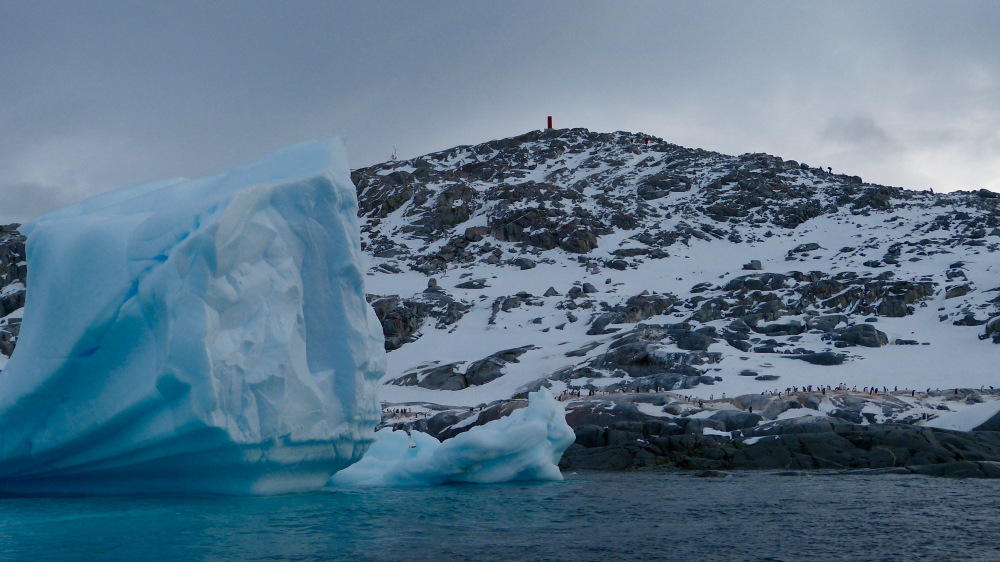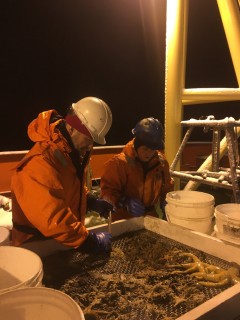Research expedition blog online: climate change and Antarctic fjord ecosystem
 Icebergs and Gentoo penguins by Useful Island. Photo by Astrid Leitner (UHM/SOEST).
Icebergs and Gentoo penguins by Useful Island. Photo by Astrid Leitner (UHM/SOEST).Follow the research activities of scientists with the FjordEco project (from SOEST, Scripps Institution of Oceanography and the University of Alaska at Fairbanks) as they study fjord ecosystem dynamics in Antarctica.
Marine communities along the Western Antarctic Peninsula (WAP) are highly productive ecosystems which support a diverse assemblage of charismatic animals such as penguins, seals, and whales as well as commercial fisheries including for Antarctic krill. The WAP also contains many fjords (deep estuaries carved by glacial ice) with active glaciers entering the ocean; these fjords appear to be intense, potentially climate sensitive, hotspots of biological production and biodiversity. Because of intense biological activity and abundant charismatic fauna, these fjords are also major destinations for a large Antarctic tourism industry. Nonetheless, the structure and dynamics of these fjord ecosystems are very poorly understood.

Craig Smith and graduate student Astrid Leitner of UH sorting animals from the Blake trawl in the wee hours of a cold night.
The FjordEco project is an integrated field and modeling program designed to evaluate physical oceanographic processes, glacial inputs, water column community dynamics, and seafloor bottom community structure and function in these important yet little understood fjord systems. These Antarctic fjords have characteristics that are substantially different from well-studied Arctic fjords, likely yielding much different responses to climate warming. FjordEco is designed to provide major new insights into the dynamics and climate sensitivity of Antarctic fjord ecosystems, highlighting contrasts with Arctic sub-polar fjords, and potentially transforming our understanding of the ecological role of fjords in the rapidly warming west Antarctic coastal marine landscape.



